Loni Johnson. 8:01. Captured by Gesi Schilling. Courtesy of UM Center for Global Black Studies
Theorizing Black Miami: Histories, Movements and Ethics of Care was a collider co-convened by Dr. Donette Francis, Director of the University of Miami’s Center for Global Black Studies, Dejha Carrington, co-founder of Commissioner, an art membership program that helps people collect the work of contemporary artists in their cities, and me, a Black Miami artist-scholar based in San Diego.
Left to Right: Ella Rodriguez, Donette Francis, Dejha Carrington, and Mysia Anderson. Captured by Chantal Lawrie. Courtesy of UM Center for Global Black Studies.
Across the span of two days, we gathered surrounded by water. The opening night was held at Bill Baggs Cape Florida State Park. We broke bread, read poetry, and listened to saxophone melodies. The palpable magic that accompanied this initial event was a testament to the consistent orientation toward community building my collaborators have professionally cultivated, especially through The Still Here: Generations of Black Miami Artmaking symposiums.
Donette Francis. Captured by Chantal Lawrie. Courtesy of UM Center for Global Black Studies.
Dejha Carrington. Captured by Chantal Lawrie. Courtesy of UM Center for Global Black Studies.
Together, as artists, scholars, activists, leaders, care-workers, humans, lovers, and seers, we gathered to collectively theorize Black Miami epistemologies. In a moment of pernicious governance that is systematically dismantling the very idea of gatherings like this, it was a privilege to center Black Miami’s unique intellectual inheritances while in community. The gathering within itself was an embodied research praxis, a Black feminist orientation to centering care and intersectionality in the midst of inhospitable environments.
Group Photo. Captured by Chantal Lawrie. Courtesy of UM Center for Global Black Studies.
Dinner Photo. Captured by Chantal Lawrie. Courtesy of UM Center for Global Black Studies.
Melvin Butler. Captured by Chantal Lawrie. Courtesy of UM Center for Global Black Studies.
Heading straight to the opening event from a delayed plane ride, I was tasked with theorizing why I suggested we structure Friday’s symposium within a three-act structure. Titled Black Miami Three Acts, this framework was a nod to the event’s desire to think across disciplines, temporalities, artistic practices, and political movements.
Mysia Anderson. Captured by Chantal Lawrie. Courtesy of UM Center for Global Black Studies.
The three-act structure was a performance studies scholar’s approach to holding the rich dramaturgy of our event in context. Our convening coincided with the 70th anniversary of Brown v. The Board of Education, hailing us to think with the ramifications of the law and the importance of Black legal experts. Our event was held near the shorelines of the historic Virginia Key Beach, Black Miami’s officially designated beach during Jim Crow segregation, at the University of Miami’s Rosenstiel School of Marine, Atmospheric, and Earth Science. This confluence of time and place rooted our calls to collectively research within Black feminist theory.
Virginia Key Beach Shoreline. Captured by Gesi Schilling. Courtesy of UM Center for Global Black Studies.
As a Black feminist, I believe theories are embodied ways of knowing experienced firsthand, studied over time, or passed on between generations. Theory comes from our everyday lives and those moments that can change the course of a person, community, or a nation. I believe theory can come from the body, but is ultimately an imaginative process of naming the world as we know it, and articulating the world we want to see. Therefore, when we gather, we are chasing after an intellectual and creative moment in time— one that resists the intellectual erasure of Black Miami knowledge systems.
Group Fellowship. Captured by Gesi Schilling. Courtesy of UM Center for Global Black Studies.
When activated as a verb, the etymology of research is to "investigate or study (a matter) closely, search or examine with continued care." As a collective of seekers within our chosen mediums, the breeze from the sea mingled with our laughter, questions, and lamentations that desired to seek out Black Miamian cultural inheritances.
Mysia Anderson witnessing Loni Johnson’s 8:01. Captured by Gesi Schilling. Courtesy of UM Center for Global Black Studies.
Black Miami in Three Acts
PROLOGUE—8:01 by LONI JOHNSON
The second gathering began with a site-specific performance by Loni Johnson called 8:01. This performance consisted of a processional to the ocean that theorized the history of Miami Beach as "sundown town" from the embodied experience of Black domestic workers. Through her body, Loni called upon the past to intervene in the present and tell an often submerged story about Black women’s belonging in this city. This is Black feminist care through performance. It transformed the waking memory of a public space for a moment in time, and made ceremonial space for those who experienced this moment of Black Miami life.
Loni Johnson. 8:01. Captured by Gesi Schilling. Courtesy of UM Center for Global Black Studies
Loni Johnson. 8:01. Captured by Gesi Schilling. Courtesy of UM Center for Global Black Studies
Loni Johnson. 8:01. Captured by Gesi Schilling. Courtesy of UM Center for Global Black Studies
Ella Rodriguez and Mysia Anderson witnessing Loni Johnson’s 8:01. Captured by Gesi Schilling. Courtesy of UM Center for Global Black Studies
ACT I: ON MOVEMENT AS CARE WORK
This session brought together Black feminist thinkers across disciplines to interrogate the world-making capacities of taking care within Black movements. Movement took on an array of meanings. I spoke about the movements within Loni Johnson’s piece, the movements of my grandmother traveling to and from Miami Beach for work, and how Black movements complicate narratives of time. Marine scientist Karlisa Callwood spoke about her movements through natural environments and STEM education; she provided an intersectional framework from understanding Black students are precluded from STEM education, even though there is a rich history of environmental intimacy across the African Diaspora. Cultural critic Donette Francis theorized one of Loni Johnson’s previous performances during Miami’s Art Basel through the photographic movements of Black women within the Virginia Key Beach digital archive. She activated this 1950s repository of Black women at work and at play within a contemporary context of efforts to preserve the memories of this site. Historian Sharony Green’s video essay artistically moved through her family’s intimate archives within contested Black Miami geographies, beautifully stitching together the hope of memories passed on.
Mysia Anderson’s presentation. Captured by Gesi Schilling. Courtesy of UM Center for Global Black Studies.
Mysia Anderson’s presentation. Captured by Gesi Schilling. Courtesy of UM Center for Global Black Studies.
Left to Right: Karlisa Callwood, Sharony Green (on Zoom), Mysia Anderson, and Donette Francis. Captured by Gesi Schilling. Courtesy of UM Center for Global Black Studies.
ACT II: FLORIDA LEGACIES OF BROWN V. BOARD OF EDUCATION
Legal scholar Osamudia James anchored the second act by providing a legal lens for understanding this moment in time. As inheritors of the Brown v. Board of Education decision, we constantly experience how Black thought, Black art, and Black education are always working in tandem with legal systems that are well-versed in confining and redirecting Black movements. From the formation of the Johns’ Committee to the Mothers of Liberty, she theorized the legal project of “white innocence” as the basis of these extralegal desires to bend the law and codify inequitable protections. With the statewide attacks on Black knowledge systems making national headlines, Professor James’ intervention was a pathfinder for the necessity of this multidisciplinary educational space.
Osamudia James’ presentation. Captured by Gesi Schilling. Courtesy of UM Center for Global Black Studies.
Nina Osoria Ahmadi asking a question. Captured by Gesi Schilling. Courtesy of UM Center for Global Black Studies.
Mysia Anderson asking a question. Captured by Gesi Schilling. Courtesy of UM Center for Global Black Studies.
This act was rounded out with an interview moderated between scholar and arts professional Nhadya Lawes and Franklin Sirmans Director Pérez Art Museum Miami (PAMM). They discussed the poetics of place within the work of Calida Rawles, with Lawes providing insight into the local stakes of her artistic practices.
Nhadya Lawes. Captured by Gesi Schilling. Courtesy of UM Center for Global Black Studies.
Left to right: Donette Francis, Dejha Carrington, Mysia Anderson, and Allison Harris. Captured by Gesi Schilling. Courtesy of UM Center for Global Black Studies.
ACT III: THE CARE WORK OF FILMING ELDER BLACK WOMEN’S ORAL HISTORIES
The final act began with an insightful and affirming conversation between filmmaker Faren Humes and film scholar Terri Francis about the ethics of Black visuality. They displayed archives of home videos, along with images from Humes’ prior works and snippets of works-in-progress. They modeled how theory and practice are in constant dialogue.
Nhadya Lawes and Faren Humes. Captured by Gesi Schilling. Courtesy of UM Center for Global Black Studies.
Shortly after, I had the pleasure of moderating a concluding discussion “On Histories for the Future” with my beloved friend and colleague Melanie White. This was a full circle for the both of us. As Miami girls, we did not know that this moment was possible. We did not know that the sacrifices of our families would lead us here and serve as a compass for our theories and guiding ethics of what theory should be in the world.
Melanie White. Captured by Chantal Lawrie. Courtesy of UM Center for Global Black Studies.
Mysia Anderson. Captured by Chantal Lawrie. Courtesy of UM Center for Global Black Studies.
Mysia Anderson and Loni Johnson. Captured by Gesi Schilling. Courtesy of UM Center for Global Black Studies.
Participant reading. Captured by Gesi Schilling. Courtesy of UM Center for Global Black Studies.
Art I Can’t Stop Thinking About:
8:01 by Loni Johnson!



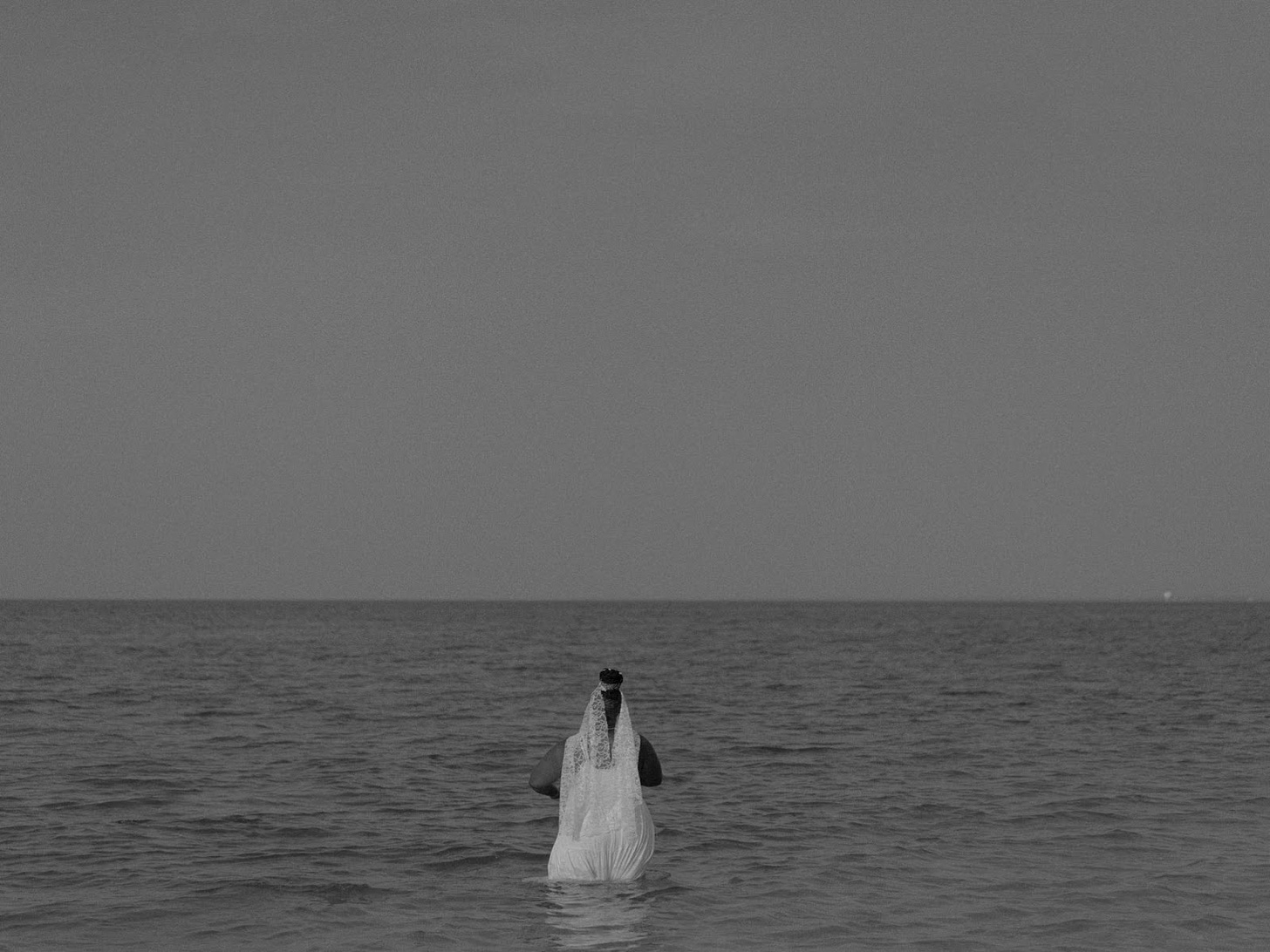
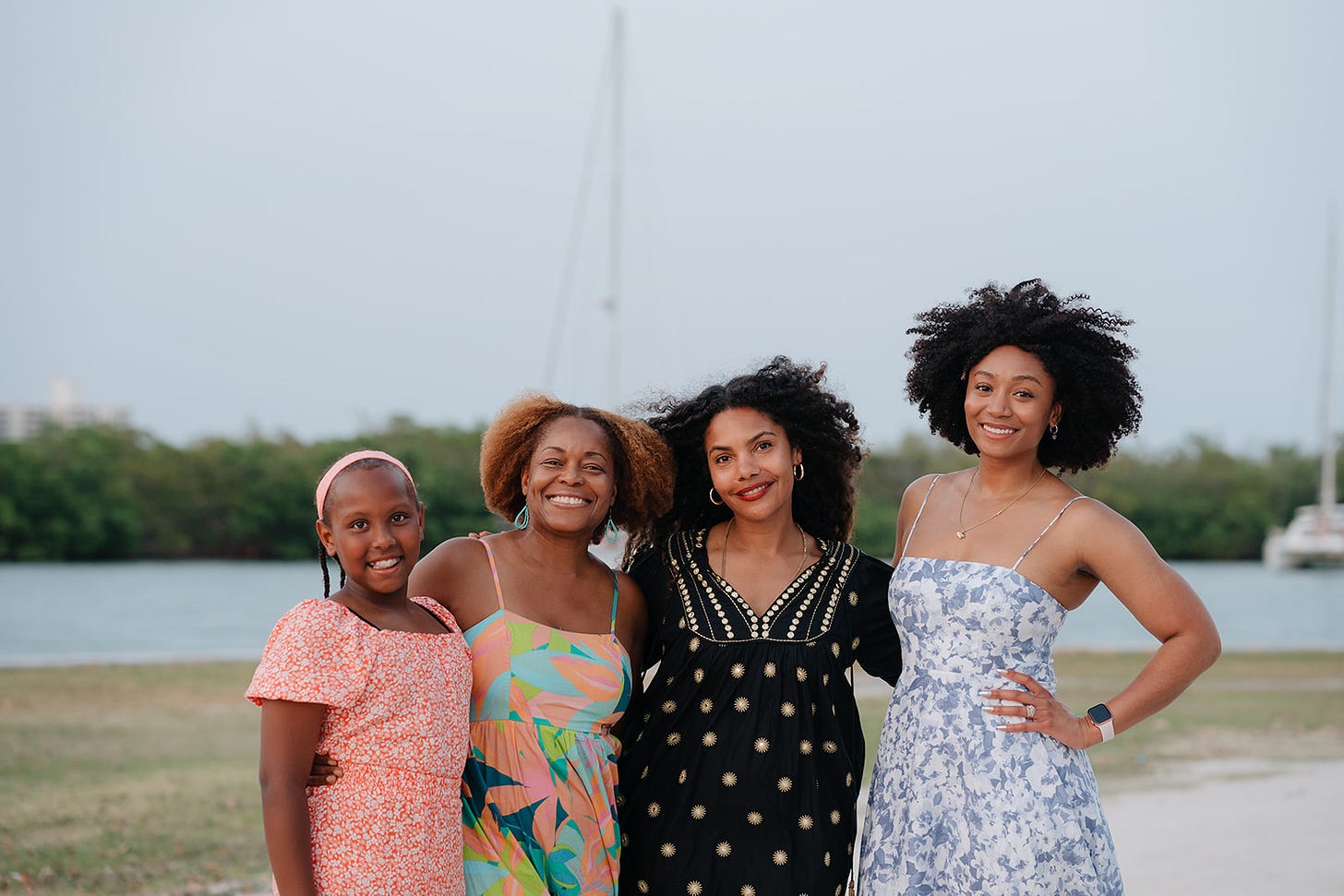
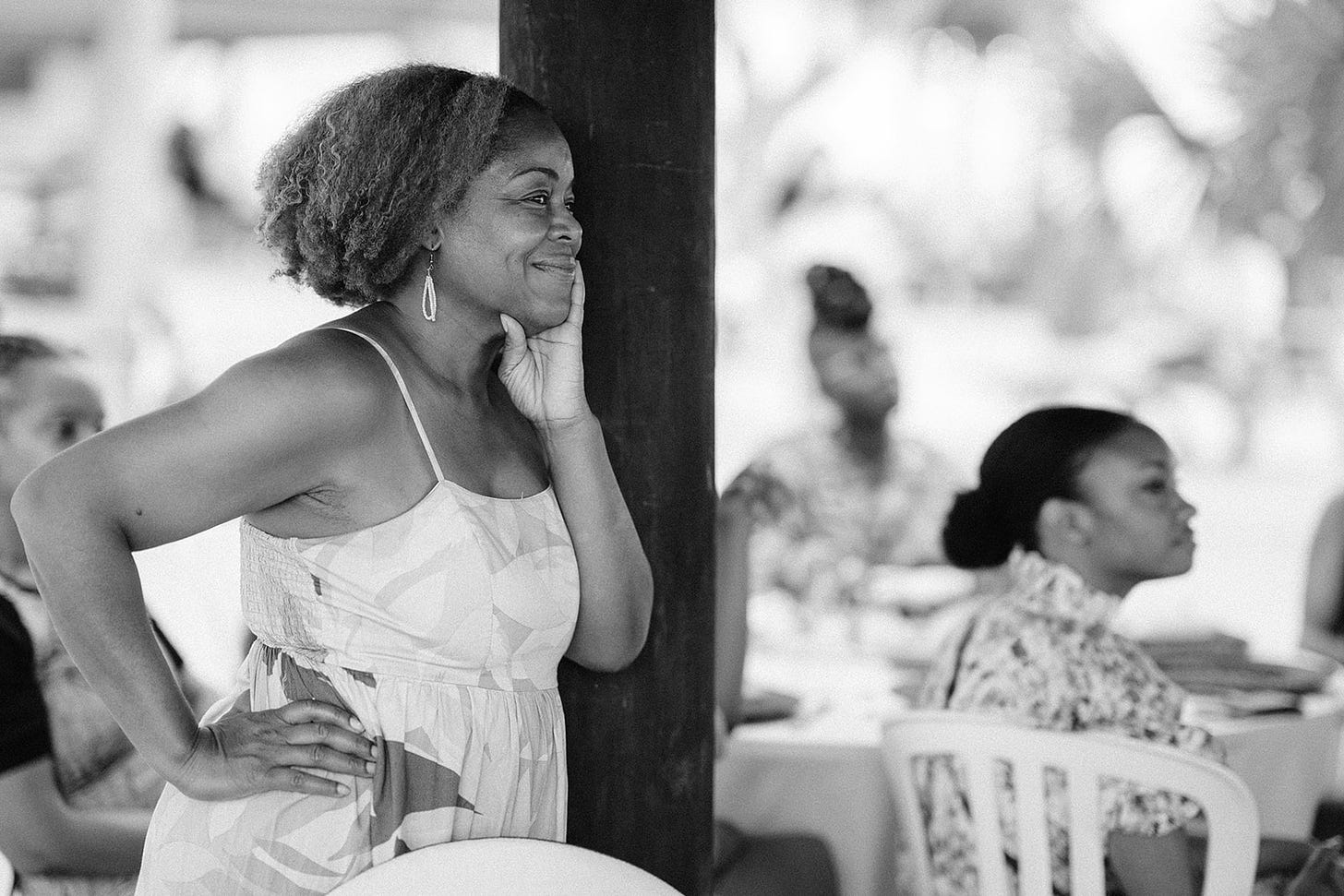
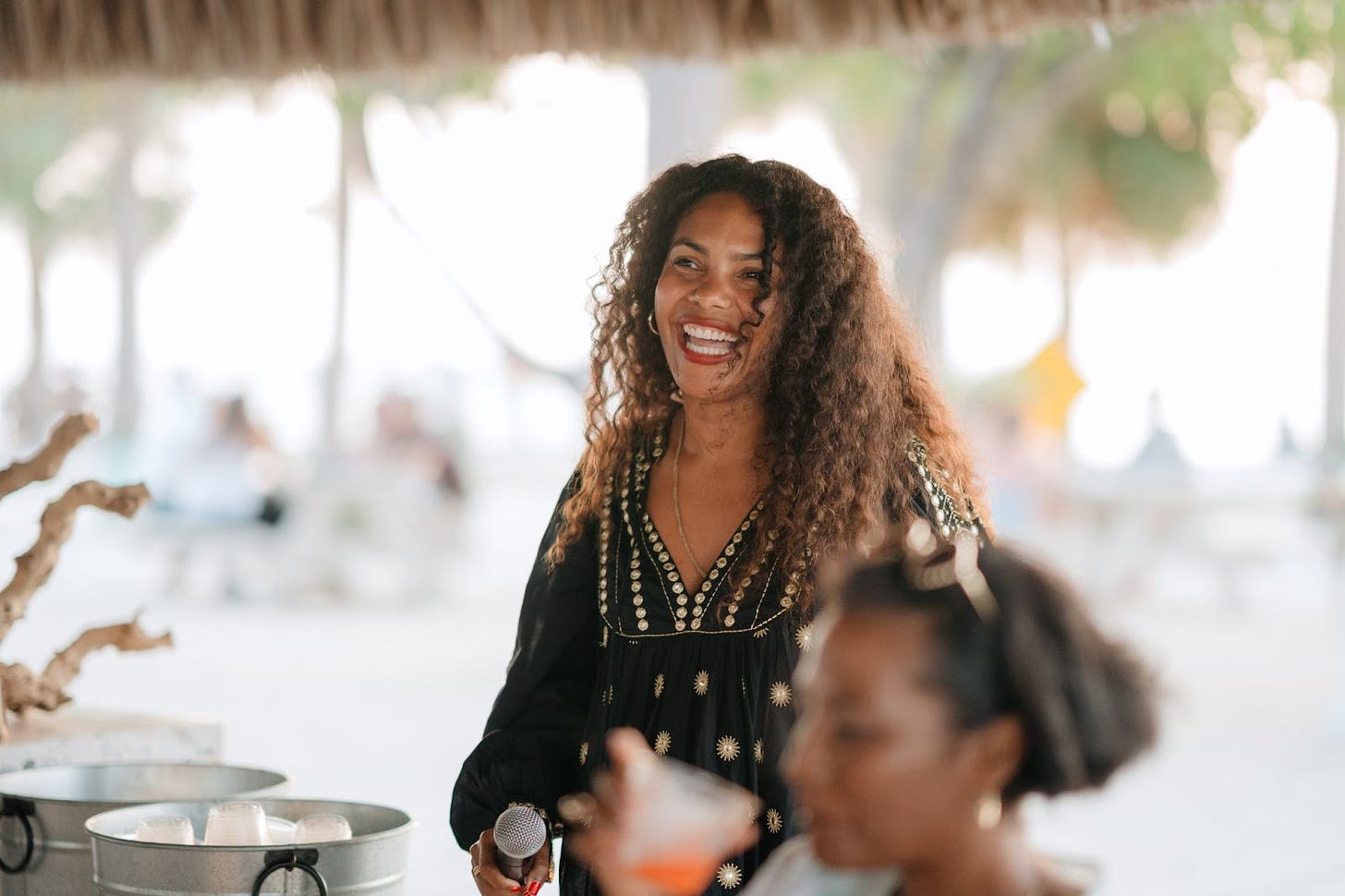
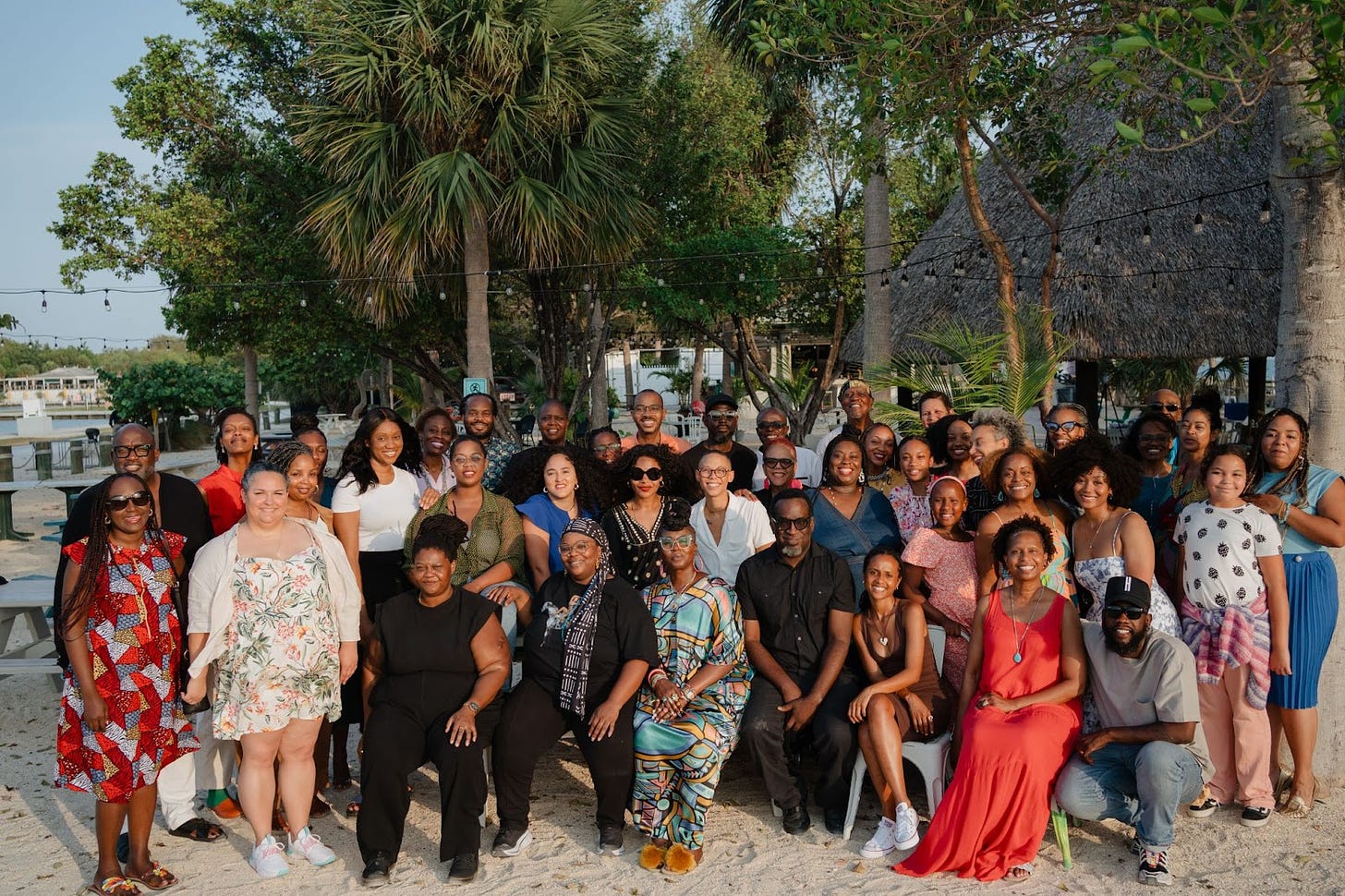
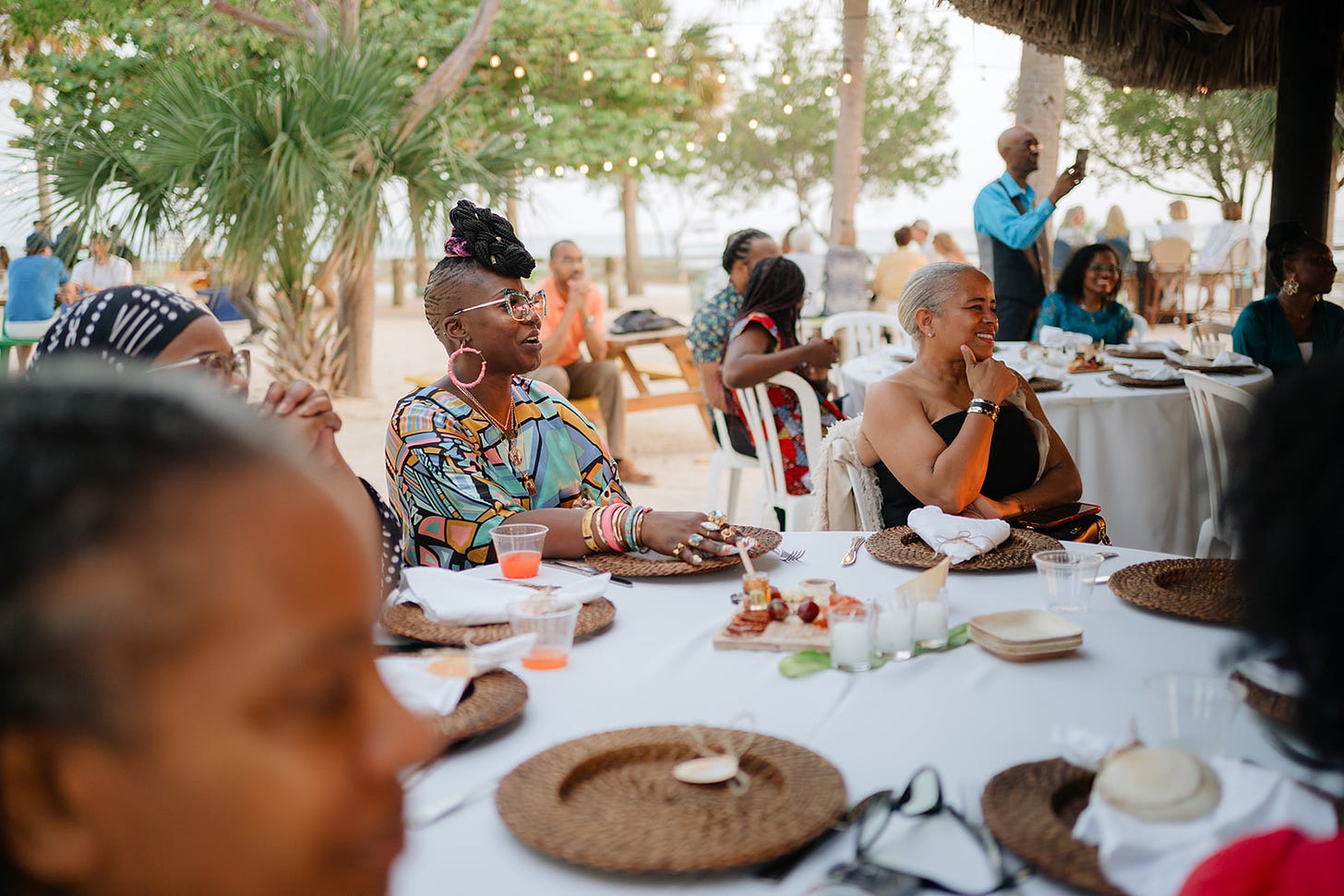
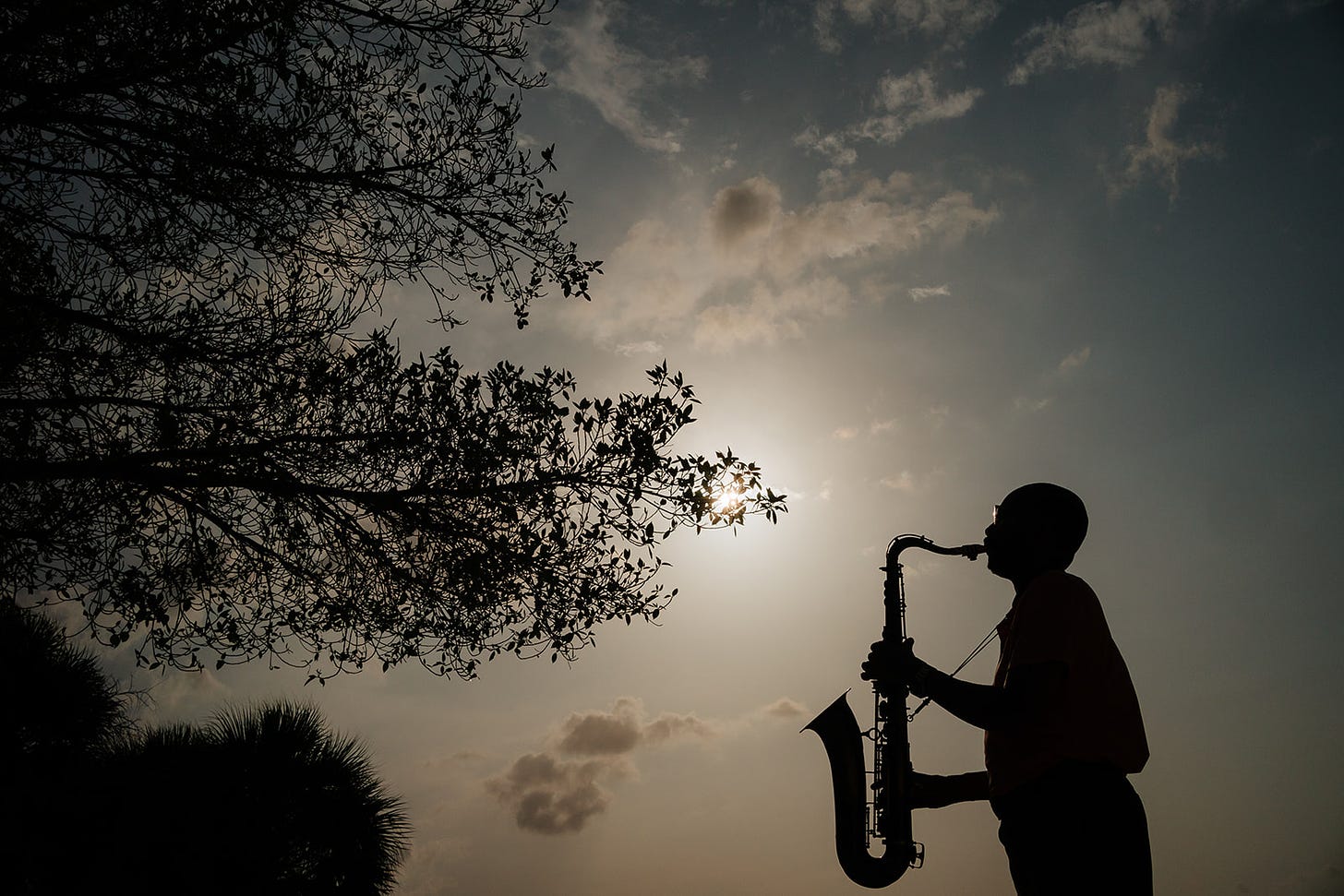
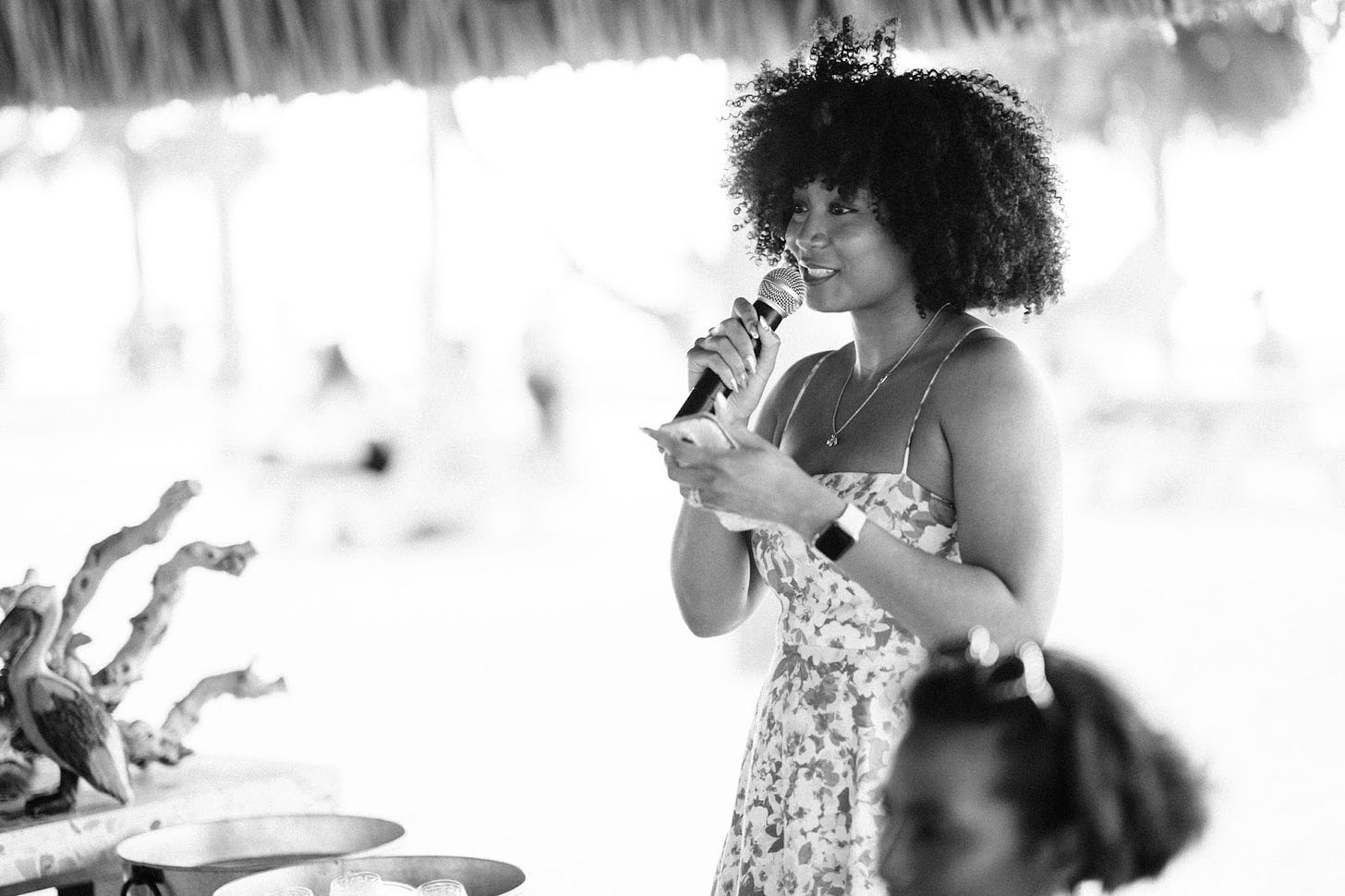



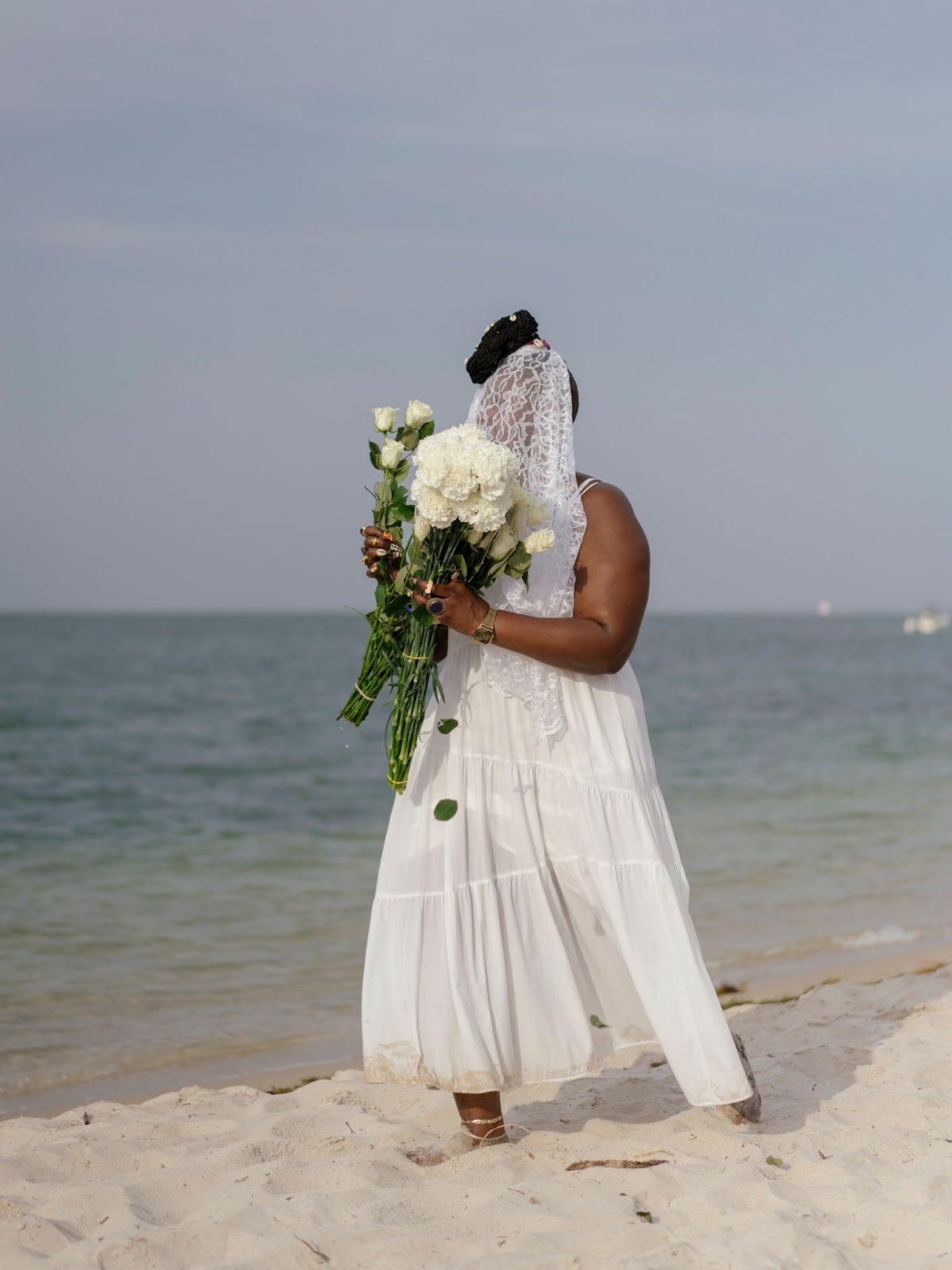
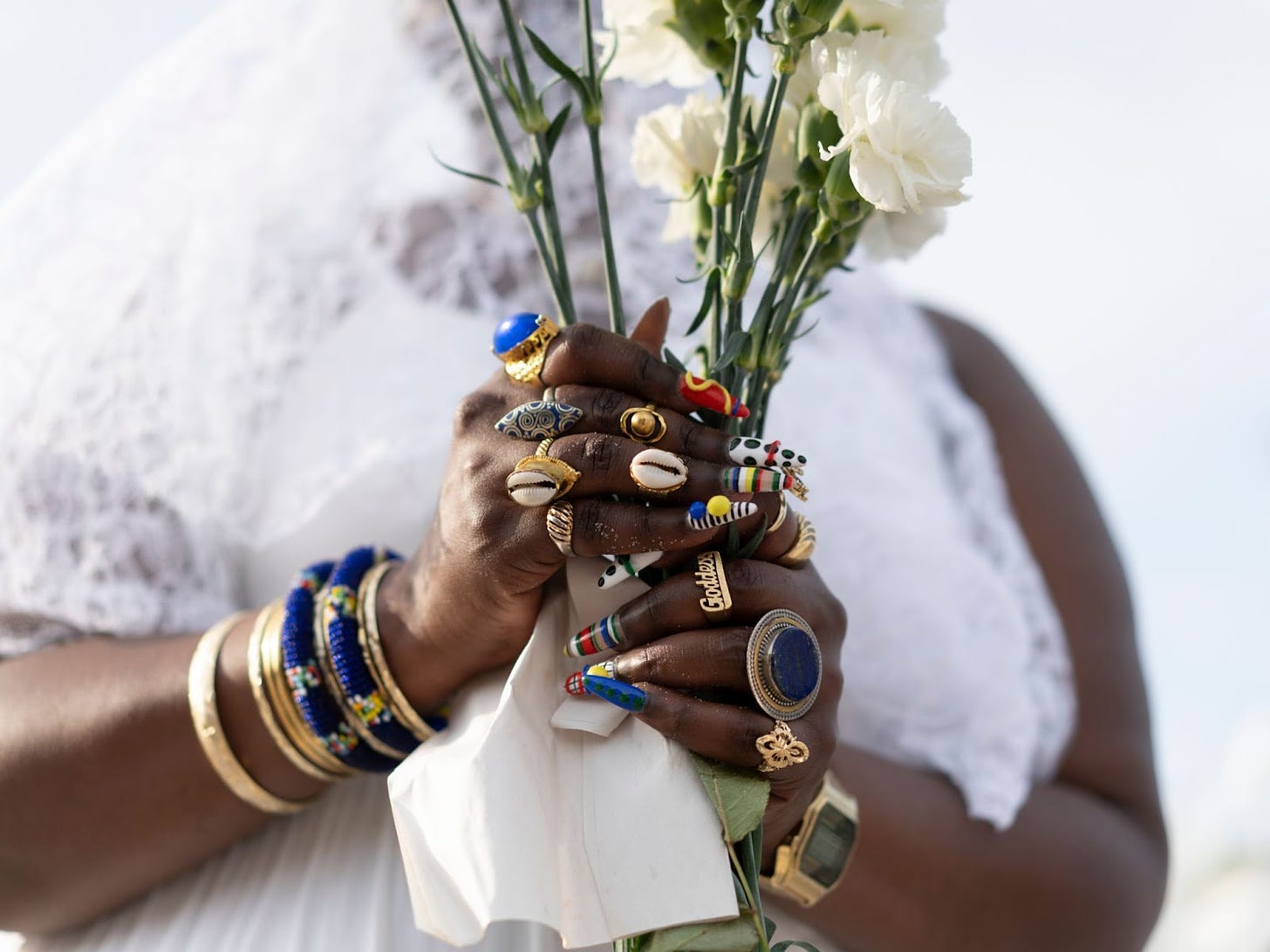
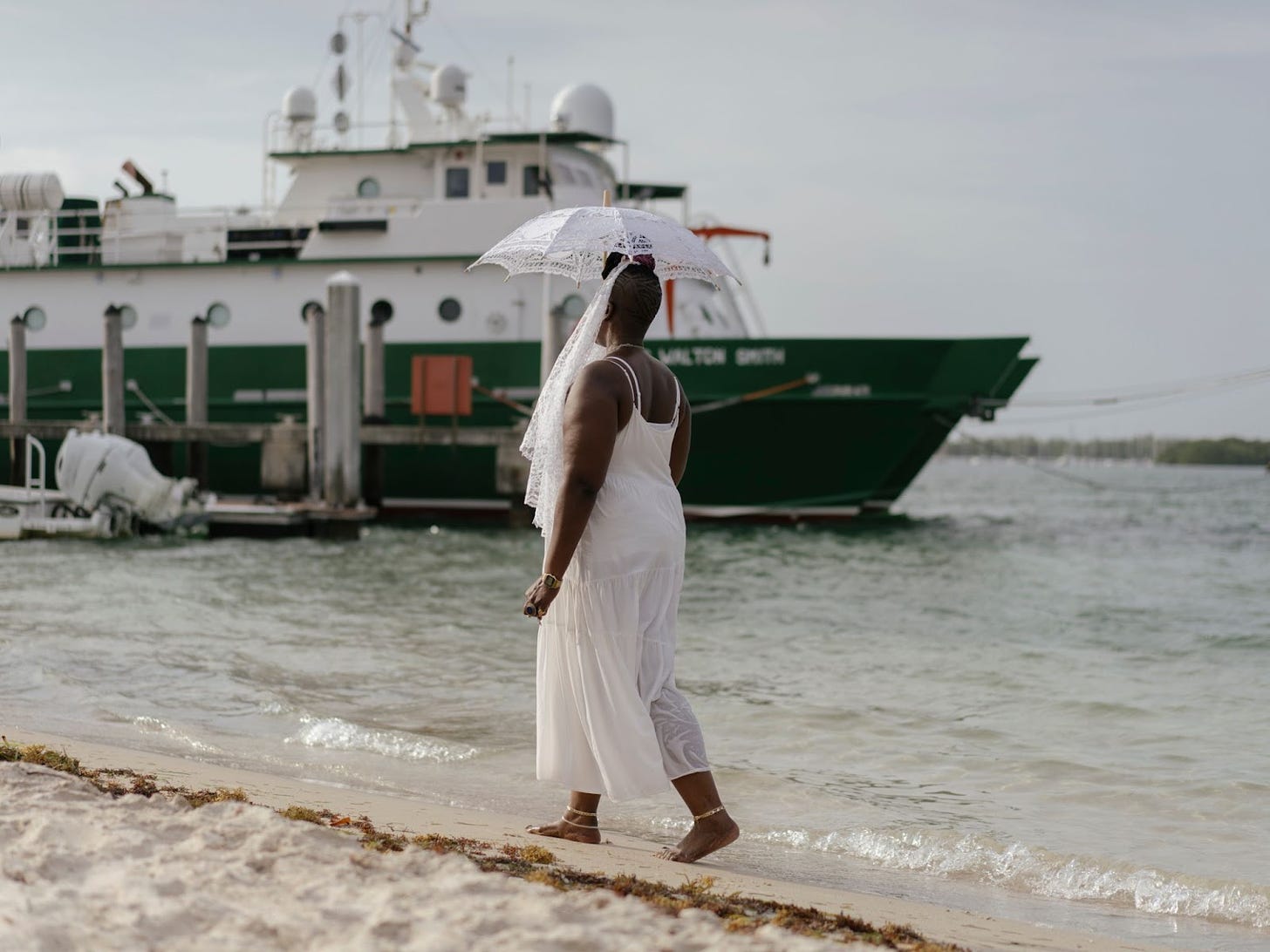
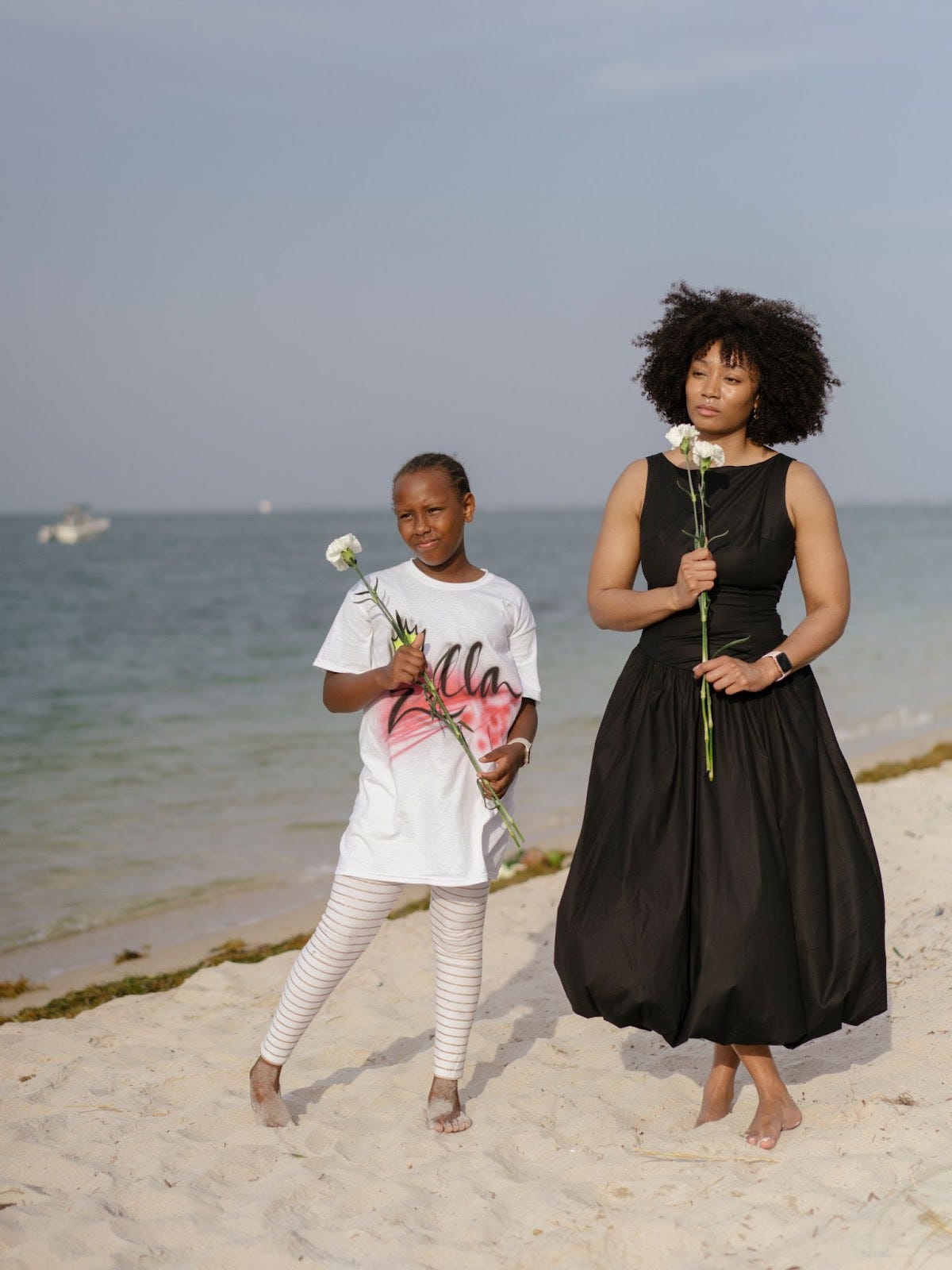
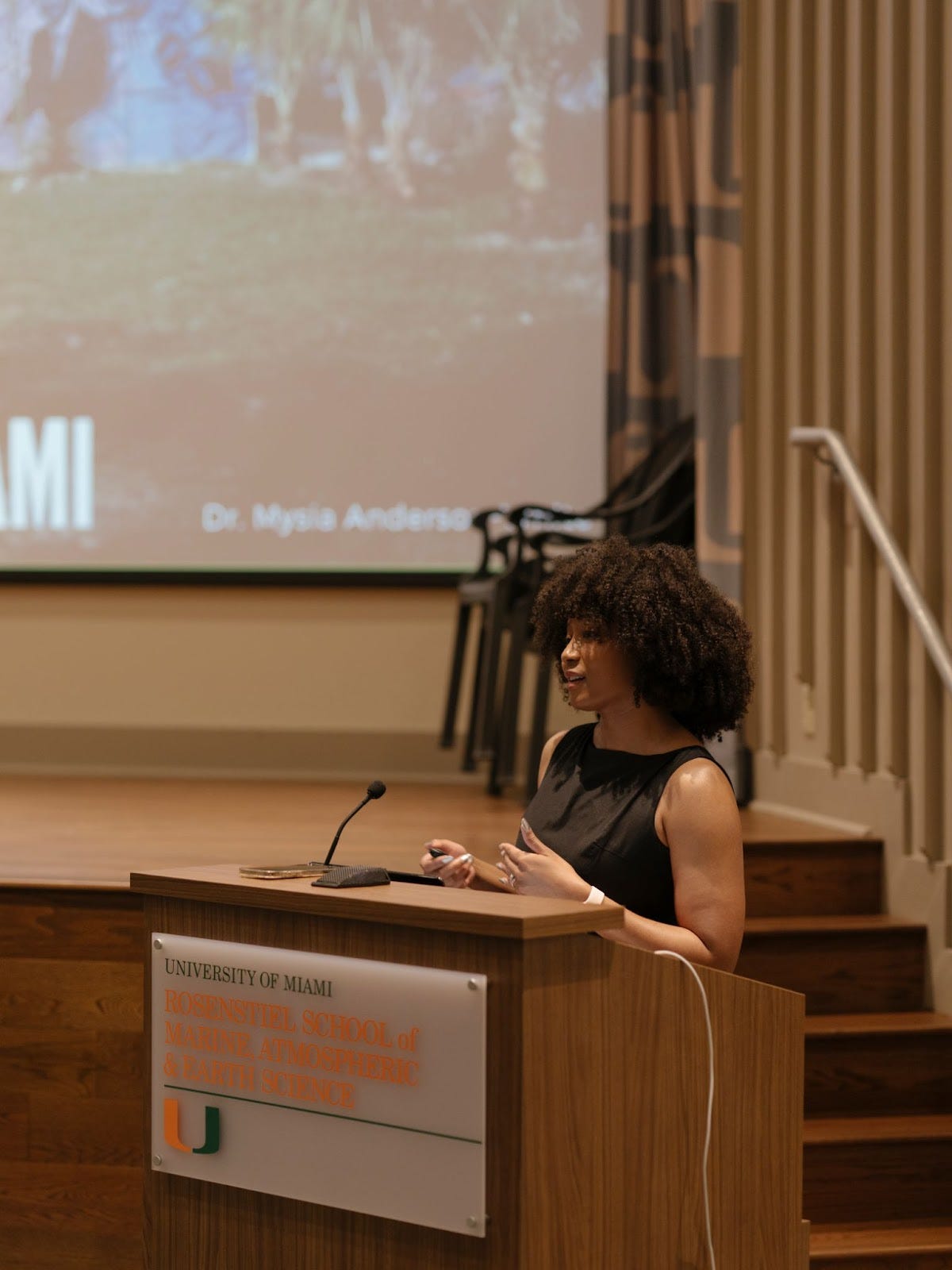
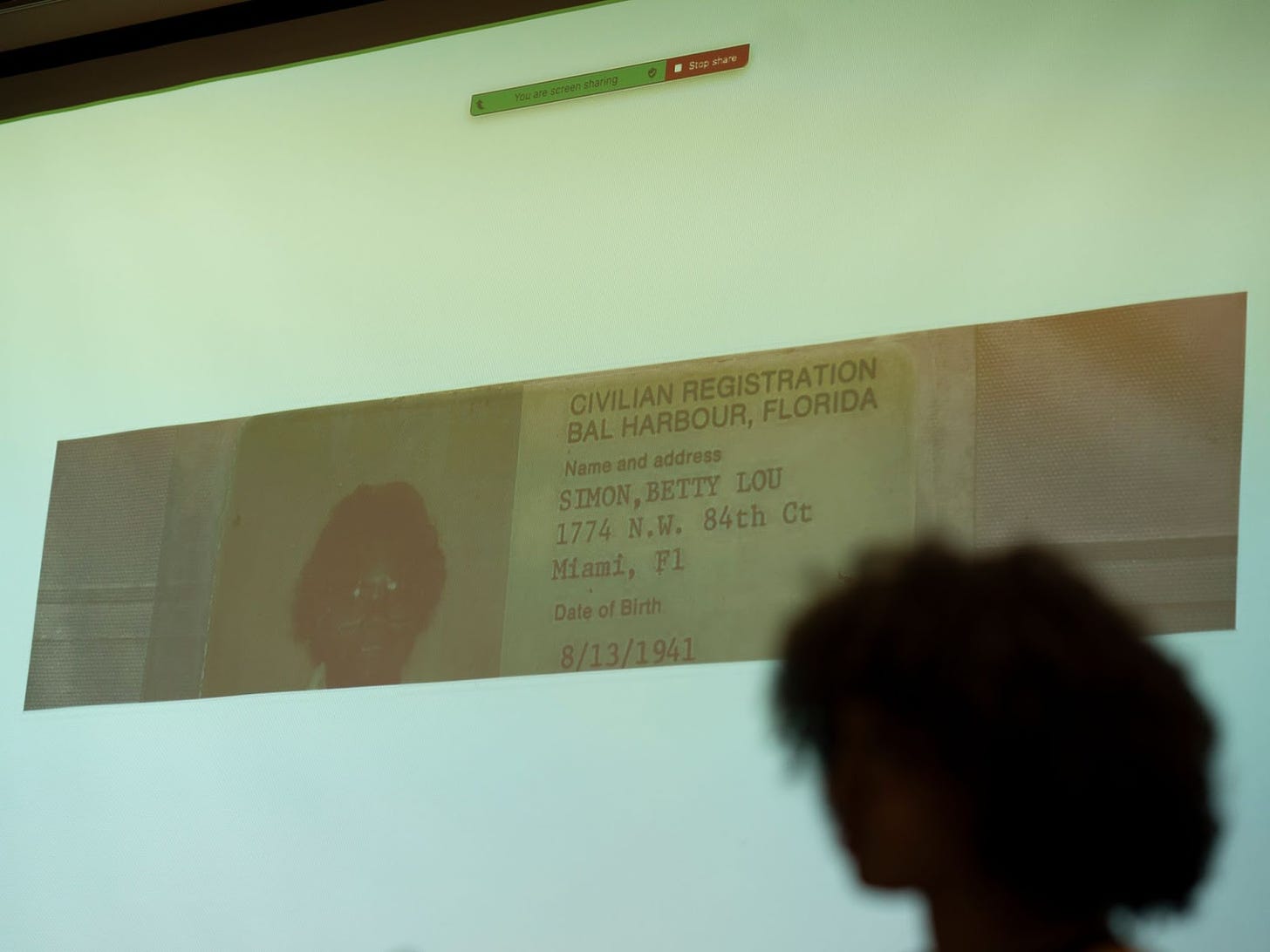
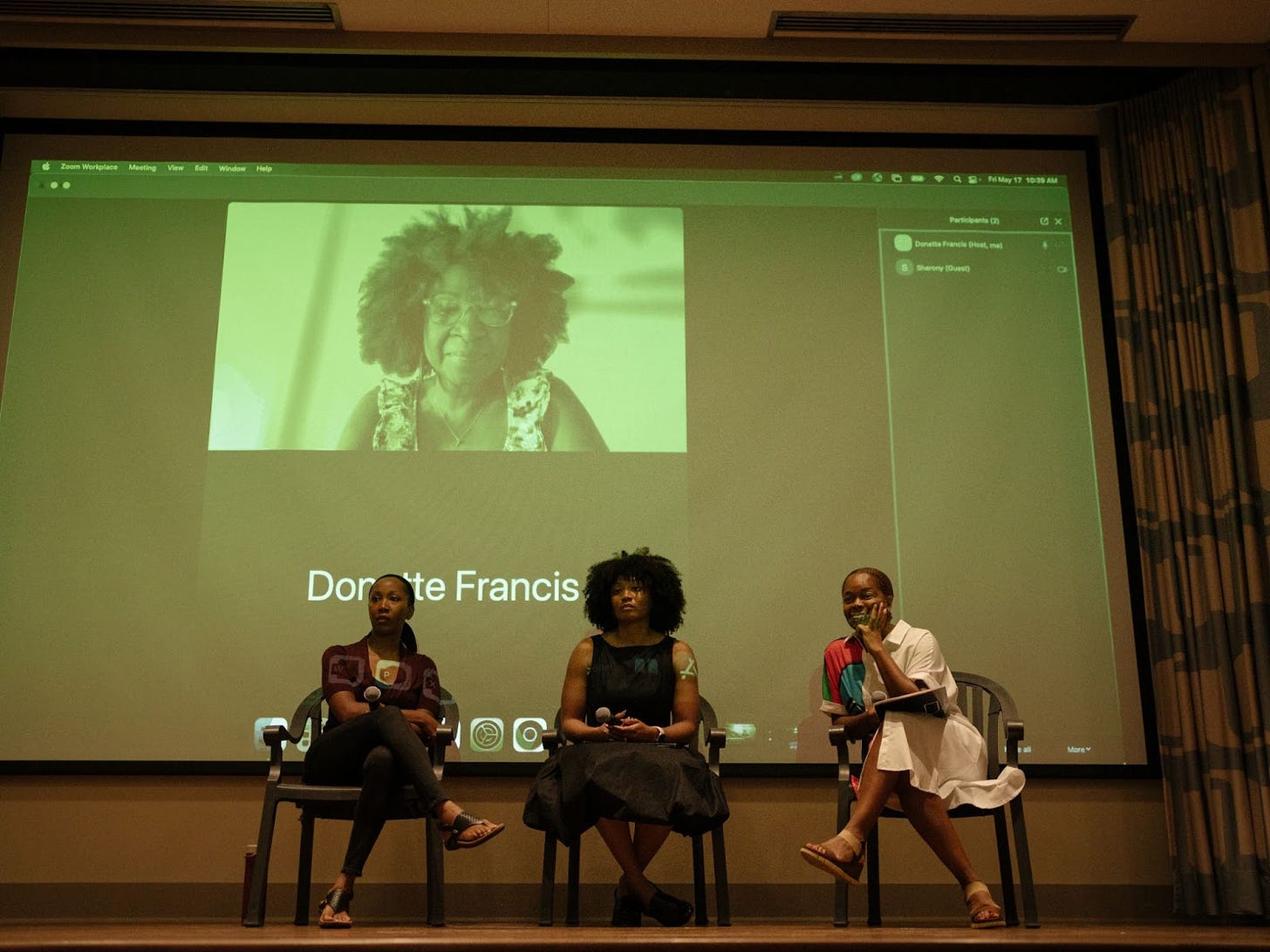
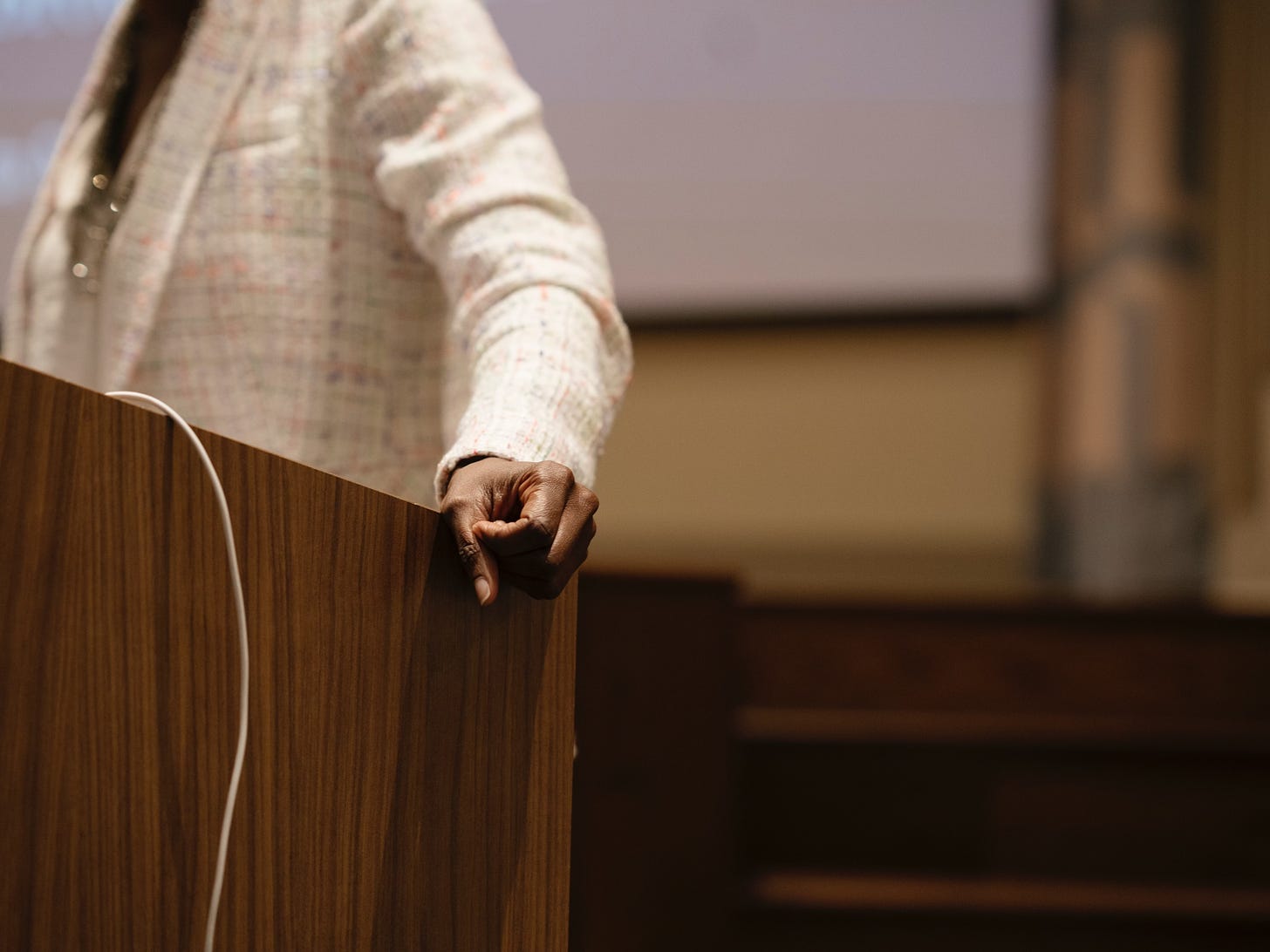
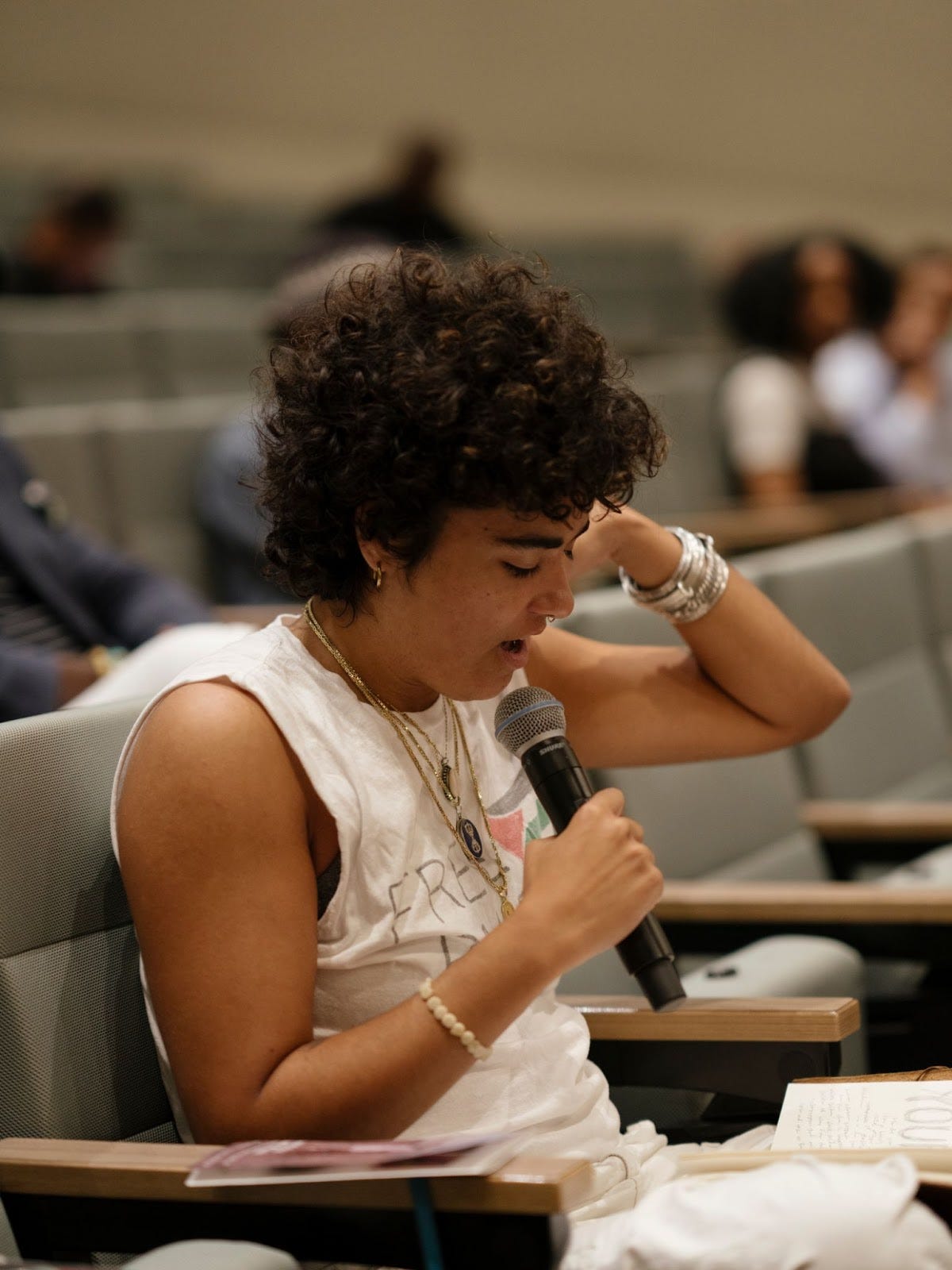
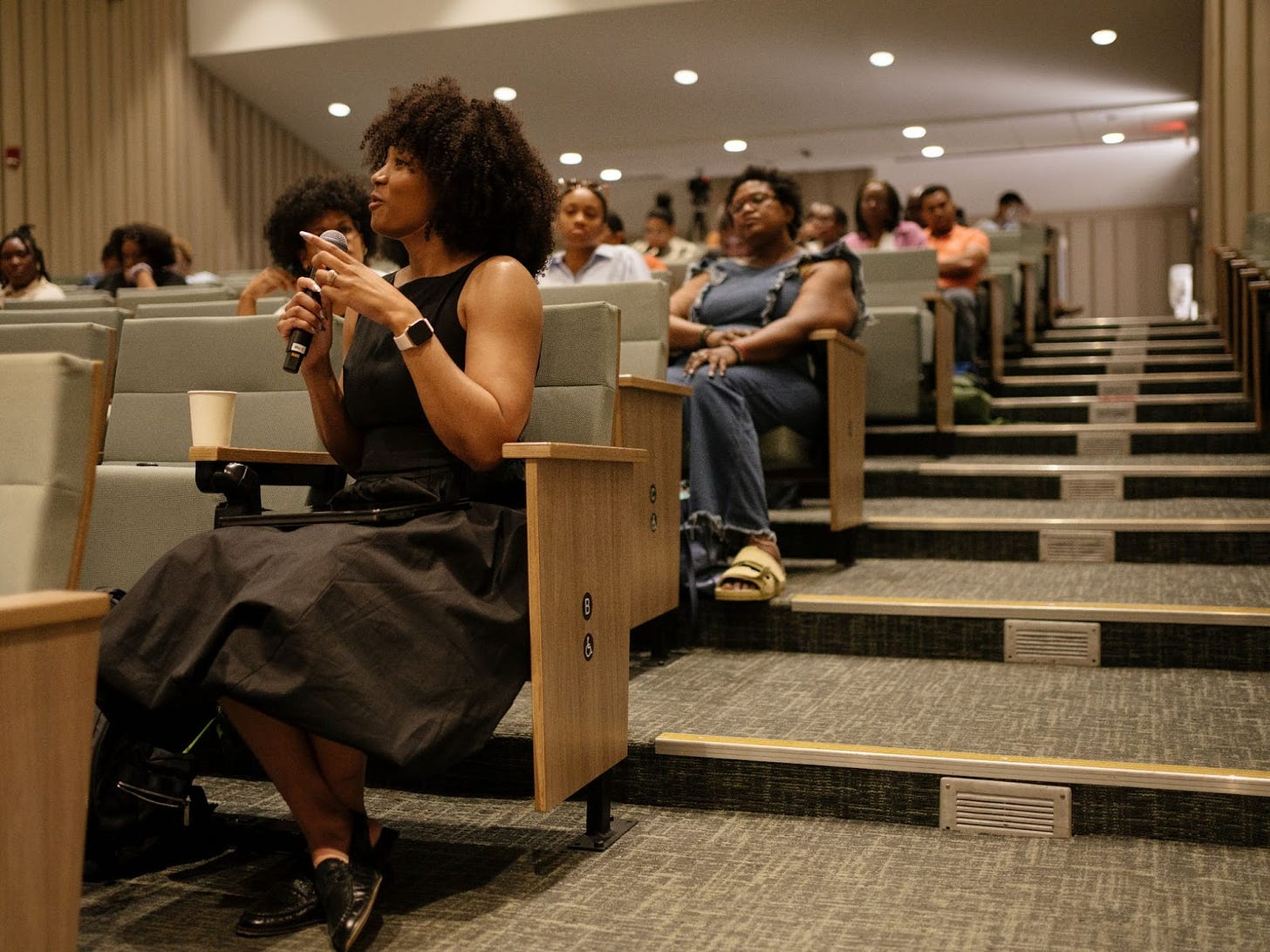
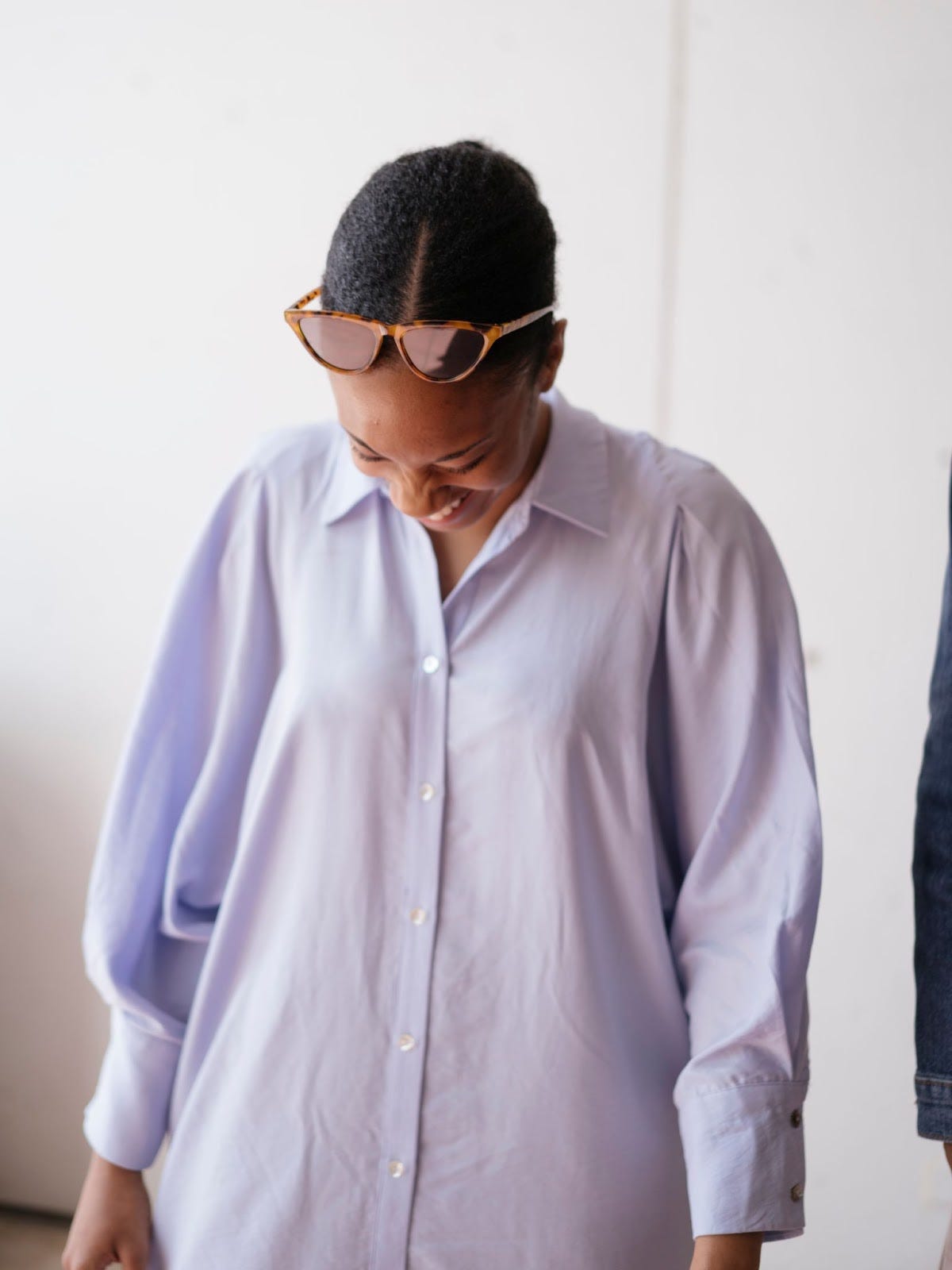
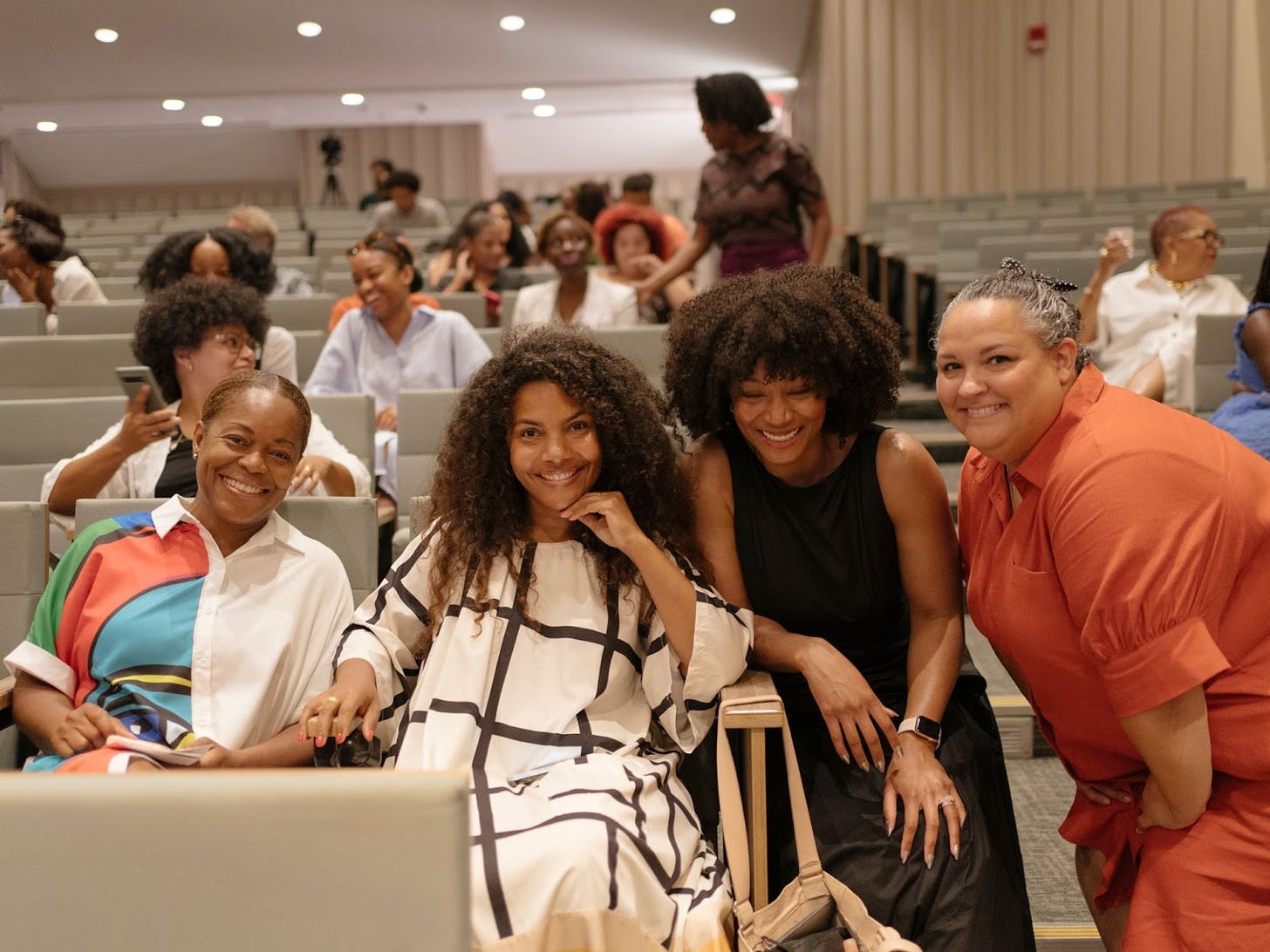
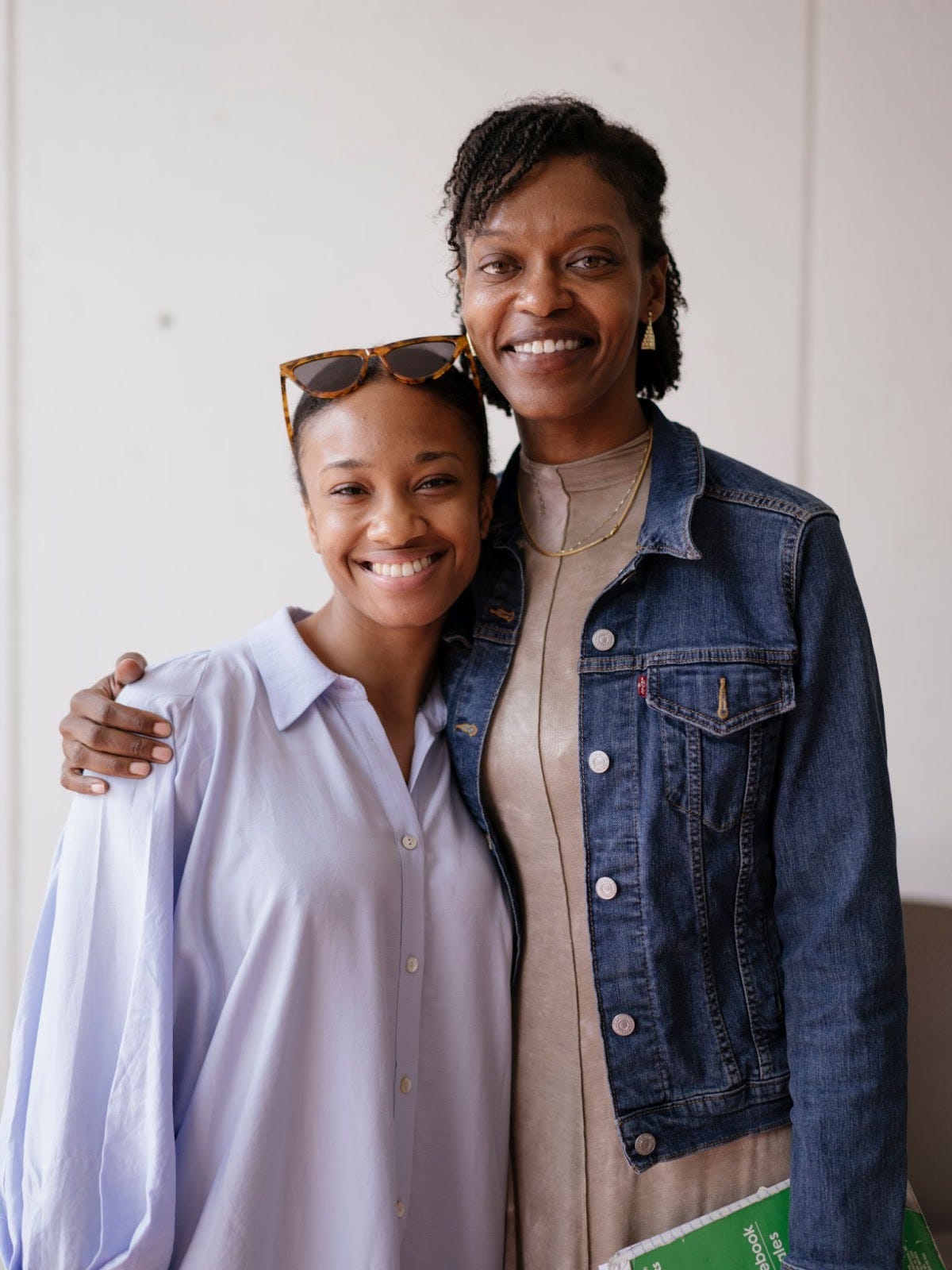
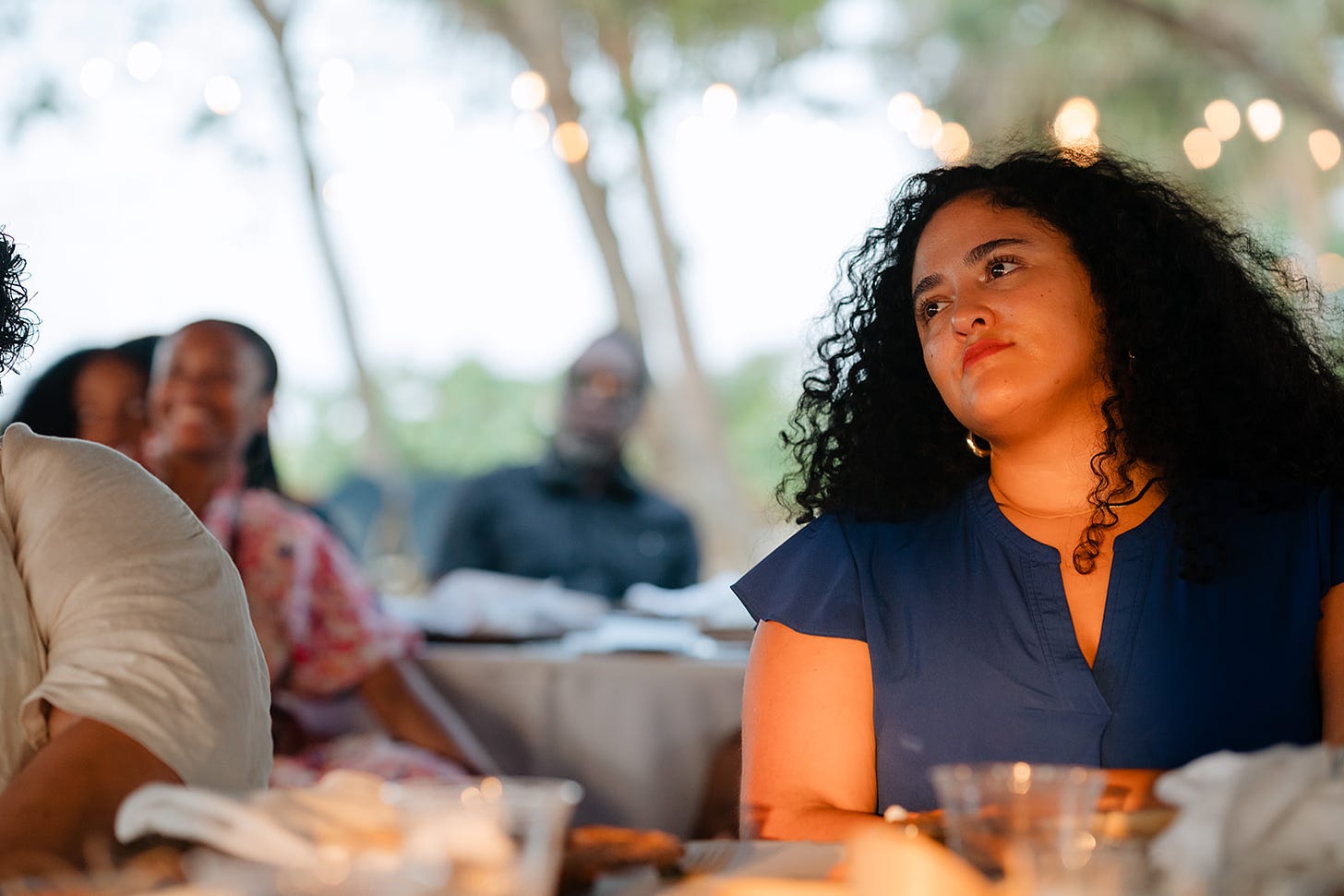
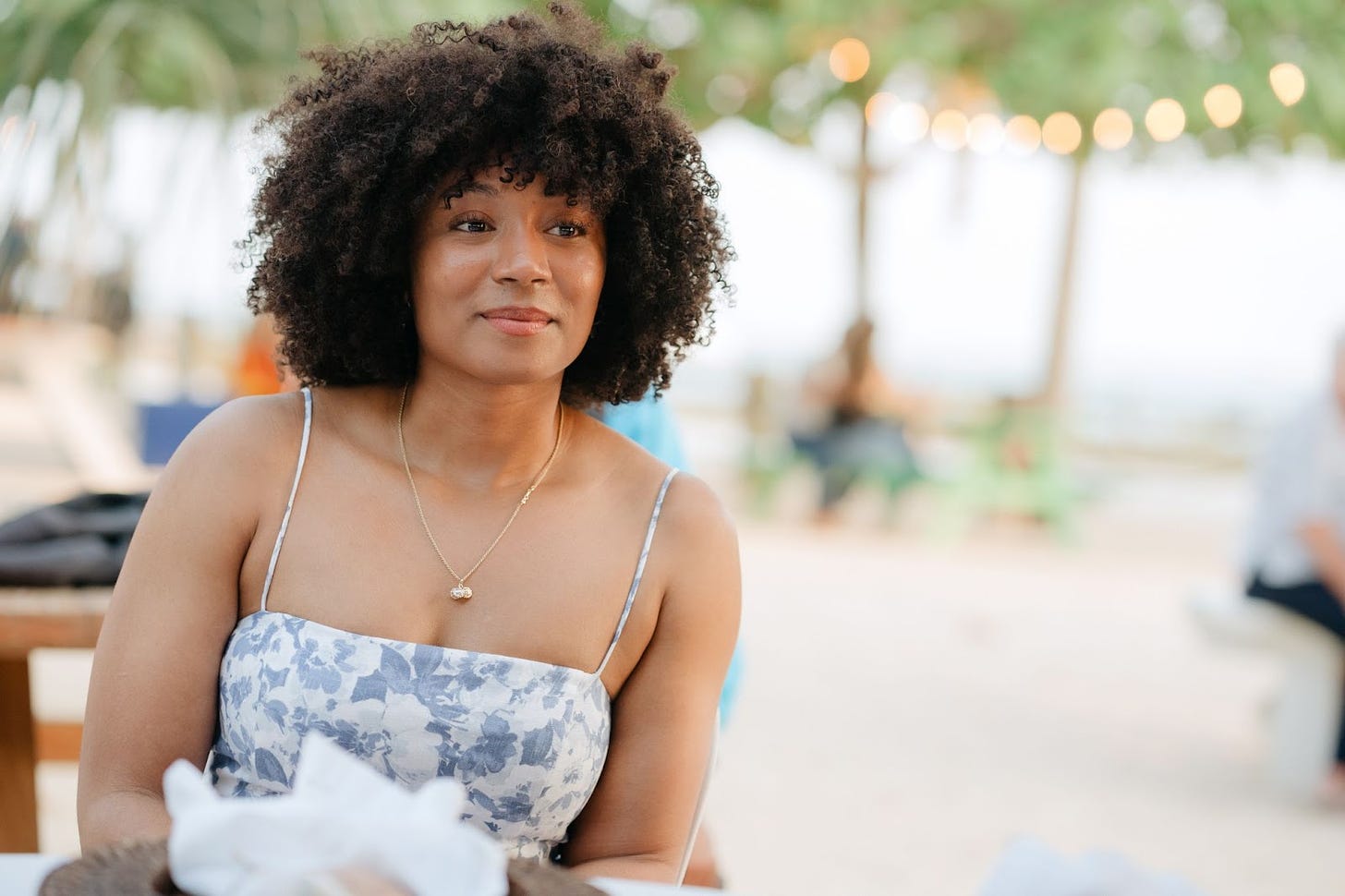
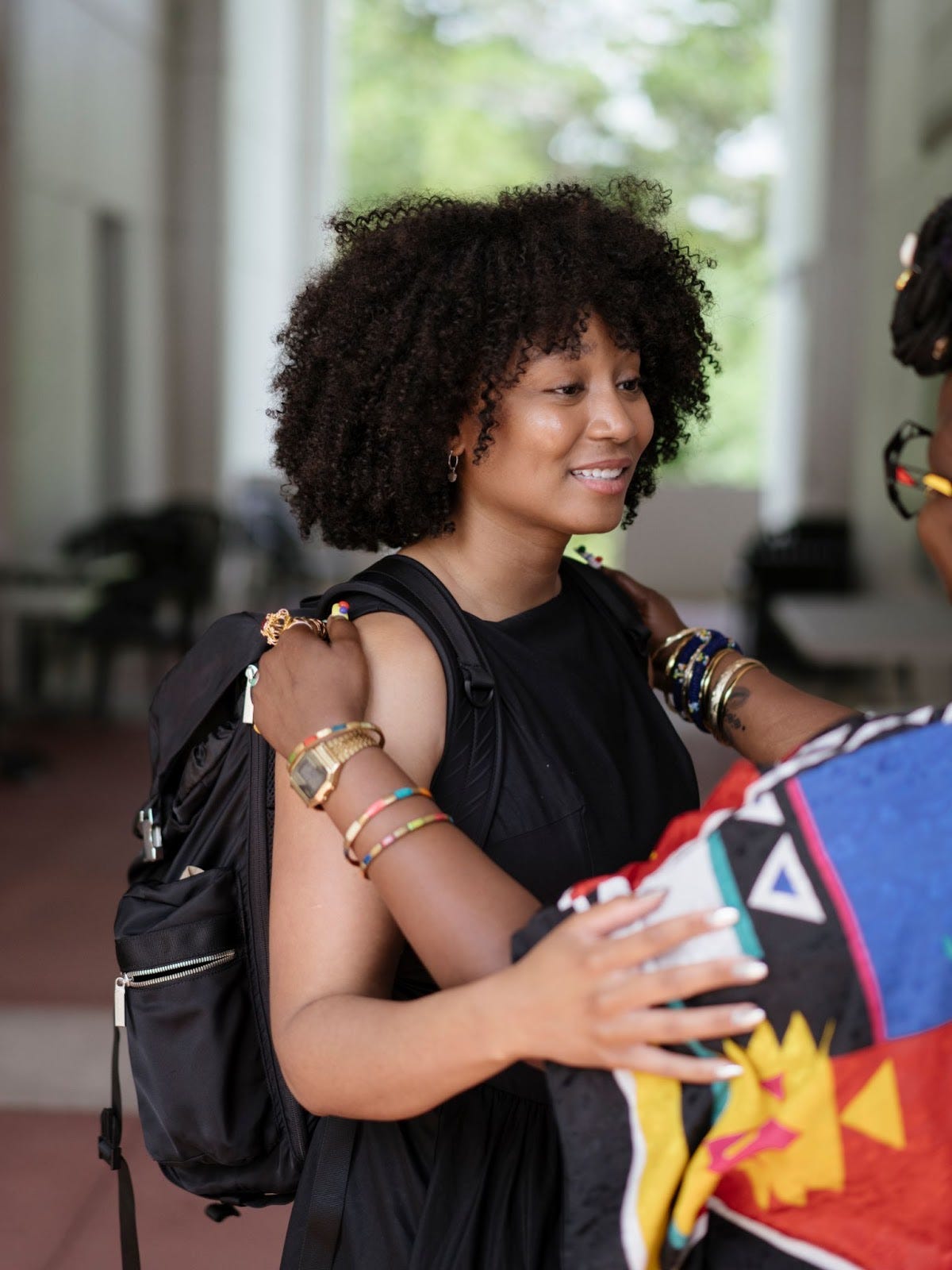
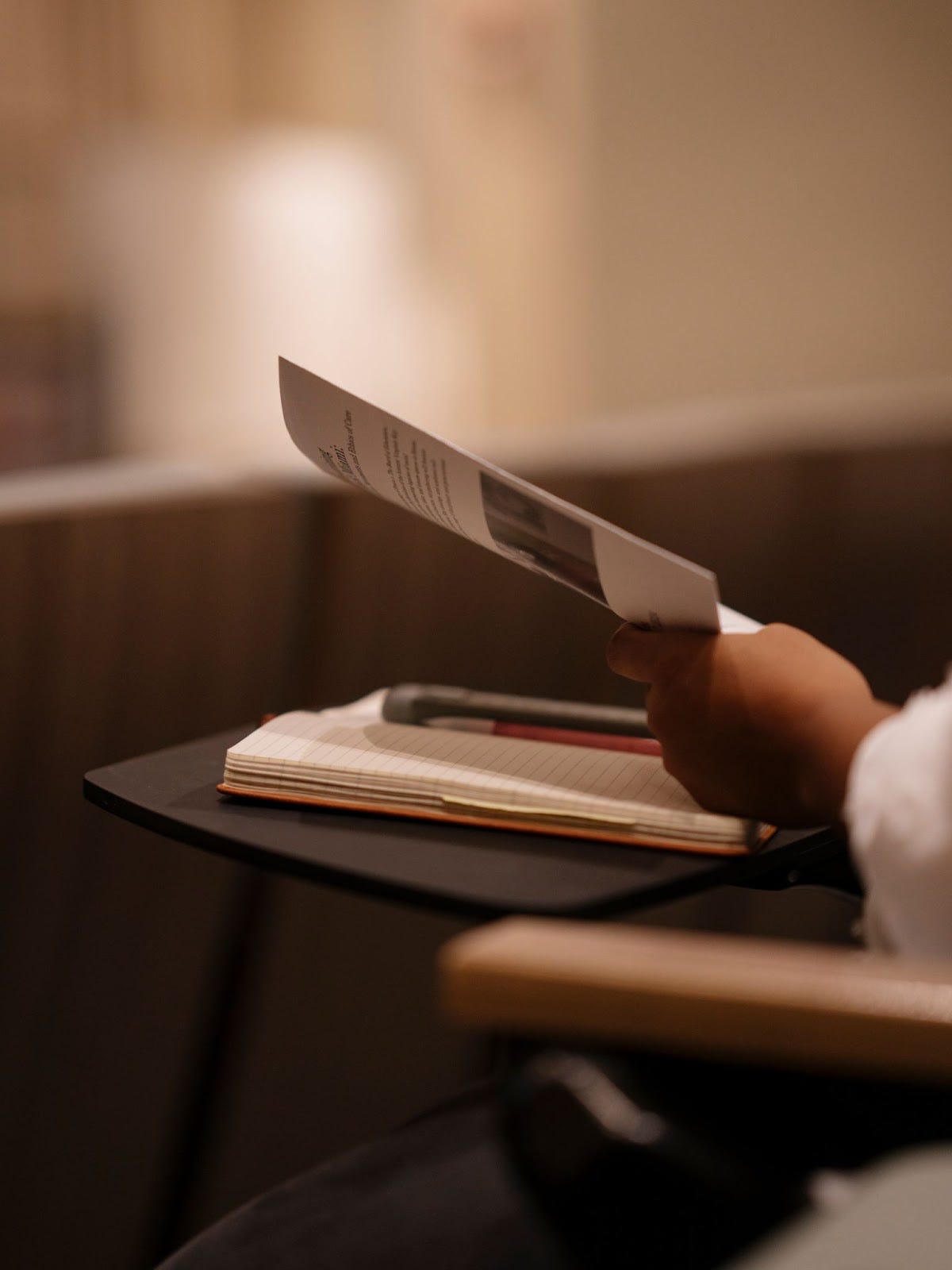
This post is brought to us by the word: APPRECIATION. Thanks for sharing all the beautiful words and photos...and for introducing me to new thinkers and scholars. xo